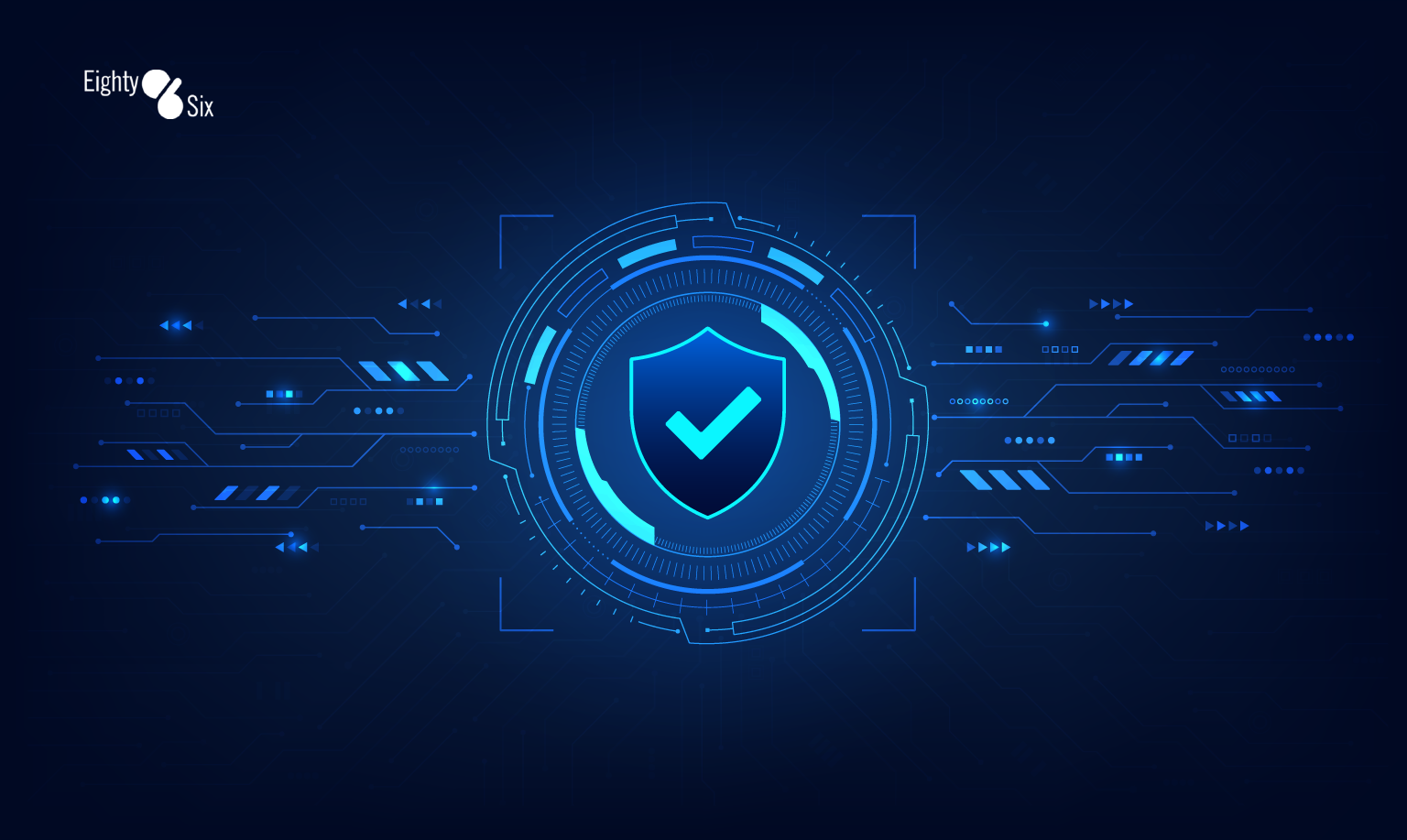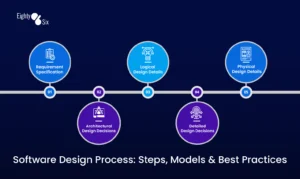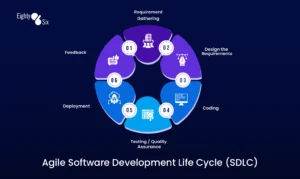Software Development Lifecycle Security: Best Practices You Need

Table of contents
In today’s digital era, businesses rely heavily on software to power their operations, products, and services. With this increasing reliance comes a growing risk: software vulnerabilities that can lead to costly breaches. According to recent cybersecurity reports, over 70% of security issues stem from flaws introduced during the software development lifecycle (SDLC).
This makes security in every phase of the SDLC not just an option, but a necessity. From planning to deployment, organizations need to integrate security best practices to protect sensitive data, maintain customer trust, and meet compliance requirements.
This article will give you a complete, step-by-step breakdown of how to build security into the SDLC, highlighting the latest trends, challenges, and proven best practices.
What Is Software Development Lifecycle (SDLC) Security?
The Software Development Lifecycle (SDLC) is a structured process that software teams use to design, build, test, and deploy applications. Traditionally, the SDLC focused on functionality, performance, and cost-effectiveness. But as cyberattacks have grown in sophistication, security has become an integral part of the process.
SDLC security means integrating security controls, reviews, and practices into every stage of development. Instead of treating security as an afterthought (something added only during testing), modern teams weave it into requirements gathering, design, coding, and deployment.
This approach prevents vulnerabilities before they enter production and saves organizations from the high costs of patching issues later.
Why SDLC Security Matters in 2025
- Rising Cyber Threats: Attackers now target the software supply chain, APIs, and cloud-native apps.
- Regulatory Pressure: Compliance frameworks like GDPR, HIPAA, and PCI-DSS demand secure development practices.
- Reputation at Risk: A single data breach can destroy customer trust.
- Cost Savings: Fixing a vulnerability during design is 30x cheaper than fixing it in production.
In short, building secure software from the start is smarter, faster, and cheaper than patching holes later.
Key Security Challenges in the SDLC
Before diving into best practices, let’s recognize the main obstacles teams face:
- Lack of Security Expertise – Developers are often skilled in coding but not trained in cybersecurity.
- Speed vs. Security – Agile and DevOps encourage rapid releases, which can leave little time for deep security checks.
- Complex Architectures – Microservices, APIs, and cloud-native environments create new vulnerabilities.
- Third-Party Risks – Open-source libraries and external integrations may introduce hidden threats.
- Inconsistent Testing – Security testing is sometimes skipped or rushed due to deadlines.
Best Practices for SDLC Security
Here’s a step-by-step look at how security should be embedded in each SDLC phase:
1. Requirement Gathering and Planning
Security starts at the planning stage. Too often, organizations define business goals but forget security requirements.
- Define Security Requirements Early: Include authentication, authorization, encryption, and compliance needs.
- Conduct Risk Assessments: Identify threats relevant to your industry and app type.
- Create a Secure Project Roadmap: Align security goals with business outcomes.
For instance, when creating a project management plan for software development, security should be listed as a key deliverable, not an afterthought.
2. Design Phase
Security in design means baking resilience into your software architecture.
- Threat Modeling: Map out potential attack vectors before coding begins.
- Data Flow Diagrams: Understand how data moves through the system and where risks exist.
- Adopt Secure Design Principles: Least privilege, fail-safe defaults, defense-in-depth.
Example: If you’re building a payment system, a software architecture example might include tokenization for card details, layered encryption, and secure APIs.
3. Development (Coding) Phase
This is where vulnerabilities often sneak in. To prevent them:
- Follow Secure Coding Standards (e.g., OWASP guidelines).
- Use Static Code Analysis Tools to catch vulnerabilities during coding.
- Review Dependencies: Audit open-source libraries for security flaws.
- Educate Developers: Train them in secure coding practices.
This is also the stage where collaborative software development plays a big role. Developers, QA engineers, and security teams must work together to enforce secure practices instead of working in silos.
4. Testing Phase
Testing is about more than functionality — it’s where security must be validated.
- Static Application Security Testing (SAST): Analyzes source code for vulnerabilities.
- Dynamic Application Security Testing (DAST): Simulates attacks on running applications.
- Penetration Testing: Ethical hackers test the system’s defenses.
- Continuous Integration (CI) Security Scans: Automated security checks with every code commit.
Remember, security should be part of all testing phases in software testing, not just left until the end.
5. Deployment Phase
Deployment introduces risks like misconfigurations and exposed secrets.
- Secure CI/CD Pipelines: Protect build servers and repositories.
- Infrastructure as Code (IaC) Scanning: Detects vulnerabilities in cloud setups.
- Secret Management: Never hard-code credentials in code or scripts.
- Zero Trust Approach: Restrict access to deployment environments.
6. Maintenance and Monitoring
Security doesn’t stop after launch. Continuous monitoring is essential.
- Patch Management: Regularly update libraries and dependencies.
- Runtime Application Self-Protection (RASP): Real-time defense against attacks.
- Logging and Monitoring: Use SIEM tools for detecting suspicious behavior.
- Bug Bounty Programs: Encourage ethical hackers to find vulnerabilities.
Emerging Trends in SDLC Security (2025 and Beyond)
- Shift-Left Security
Security testing is moving earlier into the development process. Tools now integrate with IDEs and CI/CD pipelines. - AI-Powered Security Tools
AI-driven scanners can detect vulnerabilities with higher accuracy and reduce false positives. - DevSecOps
Security is now a shared responsibility across Dev, Sec, and Ops teams — making it a continuous process. - Agile + Secure by Design
While the agile methodology advantages speed, its real power lies in integrating security into short, iterative cycles. - Zero Trust Architectures
Trust no one — every access attempt must be verified, regardless of location. - Cloud-Native Security
As apps move to containers and Kubernetes, specialized tools are emerging to secure cloud-native stacks.
Practical Checklist for Secure SDLC
- Include security requirements in project planning.
- Train developers in secure coding practices.
- Conduct regular threat modeling.
- Automate security scans in CI/CD.
- Perform penetration testing before release.
- Monitor applications post-deployment.
- Update and patch dependencies regularly.
How Agile Design Supports SDLC Security
In modern teams, agile design helps merge speed with security. Short sprints allow developers to test security features incrementally instead of leaving everything until the end. For example:
- Sprint 1: Build and test authentication.
- Sprint 2: Add role-based access control.
- Sprint 3: Implement logging and monitoring.
This ensures continuous delivery with continuous security validation.
Benefits of Partnering with Software Development Services
Many businesses don’t have the in-house expertise to implement secure SDLC practices. This is where custom software development services come in. Trusted partners bring:
- Expertise in secure architecture and coding.
- Access to advanced security tools.
- Compliance knowledge for regulated industries.
- Dedicated security testing teams.
Conclusion
Software development lifecycle security is no longer optional — it’s the backbone of building reliable, future-ready applications. From planning to deployment, every stage demands robust security practices, advanced tools, and a culture that prioritizes safety. With cyber threats becoming more sophisticated, adopting secure-by-design principles is essential to protect data, customers, and brand trust.
At 86 Agency, we specialize in helping businesses embed security seamlessly into their software development process. Our expertise ensures your applications are not only innovative but also resilient against ever-evolving threats. If you’re ready to take your software security to the next level, let’s talk.
FAQs
1. Why is SDLC security considered more cost-effective than fixing issues after release?
Fixing a vulnerability during the design phase may cost a few hours of planning. But once in production, that same issue could require expensive patching, downtime, and crisis management. Research shows post-release fixes cost 30–50 times more. Early investment in secure SDLC reduces total costs and prevents reputational damage.
2. How does DevSecOps fit into the SDLC?
DevSecOps is essentially SDLC security in action. It embeds security practices directly into development and operations workflows. Instead of having security checks as a separate step, tools like SAST, DAST, and dependency scanning run automatically during builds. This keeps pace with fast release cycles while ensuring no critical vulnerabilities are ignored.
3. What role does agile methodology play in secure development?
Agile development breaks work into short cycles (sprints). This makes it easier to test security incrementally, instead of waiting until the project ends. Each sprint can deliver a secure, functional piece of software. Agile also fosters close collaboration between developers, testers, and security professionals, reducing gaps and misunderstandings.
4. Which security practices are most often overlooked during SDLC?
The most common oversights are:
- Failing to define security requirements in planning.
- Ignoring secure coding guidelines.
- Skipping dependency audits for third-party libraries.
- Minimal testing for API security.
- Weak secret management (e.g., hardcoding passwords).
These mistakes create loopholes that attackers often exploit.
5. How do I secure third-party components in my software?
Third-party libraries and APIs save time but pose risks if not maintained properly. To secure them:
- Maintain an updated inventory of all dependencies.
- Regularly patch and update libraries.
- Use Software Composition Analysis (SCA) tools.
- Remove unused or outdated components.
By treating external code as a potential risk, you minimize supply-chain vulnerabilities.
6. What’s the difference between testing for functionality vs. testing for security?
Functional testing checks if software works as expected — e.g., does a login form validate user input?
Security testing checks if it can be exploited — e.g., can an attacker bypass authentication using SQL injection? Both are essential, but security testing requires specialized tools, penetration testers, and an attacker’s mindset.
7. How will AI shape the future of SDLC security?
AI is transforming SDLC security in several ways:
- Automated vulnerability detection in code and dependencies.
- Anomaly detection in production environments.
- Faster triage of false positives, reducing noise for developers.
- Predictive analytics to identify risk areas before they’re exploited.
AI won’t replace human expertise, but it will significantly speed up secure development.
8. Can small businesses afford secure SDLC practices?
Yes — many security practices are cost-efficient and even free. For example:
- Open-source tools for static code analysis.
- Free dependency scanners for open-source libraries.
- Cloud providers offering built-in security features.
Small businesses may not need enterprise-level systems, but integrating basic secure coding and testing early still protects them from costly breaches.




